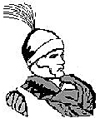
It was a cold morning. The sun was bright, though, stoking a red fire from the desert sand and rock beneath an infinite blue sky. The day would be warm in Jordan.
The anticipation built as we crunched along the narrow gully. At times, the rocky floor smoothed to pavement more than a thousand years old. Ghosts of carvings on the rock walls illustrated the stories Mohammed told us -- of the biblical Elamites, the Greek and Roman invaders, and of course, the Nabataen inhabitants.
Soon, we were there. A warm orange glow emanated from a cleft in the rocks. The narrow canyon ended and we got our first sight of the lost city of Petra, bathed in sunshine. It tugs at your heart. Two rows of columns atop each other, the monument was a perfect blend of the stately, classical Greek and soaring, vertical Egyptian styles. The Treasury, Petra's first and most famous sight, is carved entirely out of the orange-rose rock of the looming cliff side. The name was given by the Bedouin, who guarded the secret of the ruined city for centuries.
They fired their rifles at the solid, stone urn at the top of the monument, hoping to shatter it and release a rain of nonexistent gold. The bullet scars showed amidst the time-blurred figures of gods who adorned the spaces between the columns.
That the clever Nabataens could build a city here in the desert was due to their careful placement of dams and water channels. In the last couple centuries B.C., they poured the wealth of caravan routes into enormous monuments and temples. Nearly all of their masterpieces were carved directly out of the swirled, sherbet-like rock that glowed in the sun.
When the Romans came, they added arches, street of columns and a sandstone theater. The Byzantines layered in graceful churches with colorful mosaic floors. The Crusaders, castles. Then came the Arabs, who gently closed Petra's door to the outside world. Sand, wind and occasional Bedouin were the only wanderers here. But here I stood, drinking it all in.
I climbed to the High Place and imagined a thriving city amidst the barrenness. As the sun began to sink behind the mountains, I exited the city by the Treasury. Its surface now tinted with a cool blue. Theysayits stones change color according to the light of the day. The warm orange was gone, but was there a hint of mysterious purple? Despite all I'd seen that day, perhaps Petra was telling me there is so much more lying hidden. More mysteries. More ruins to explore, more lost cities of antiquity...
Back to The Herald 28 Table of Contents
Back to The Herald List of Issues
Back to MagWeb Master Magazine List
© Copyright 2001 by HMGS-GL.
This article appears in MagWeb (Magazine Web) on the Internet World Wide Web. Other military history articles and gaming articles are available at http://www.magweb.com